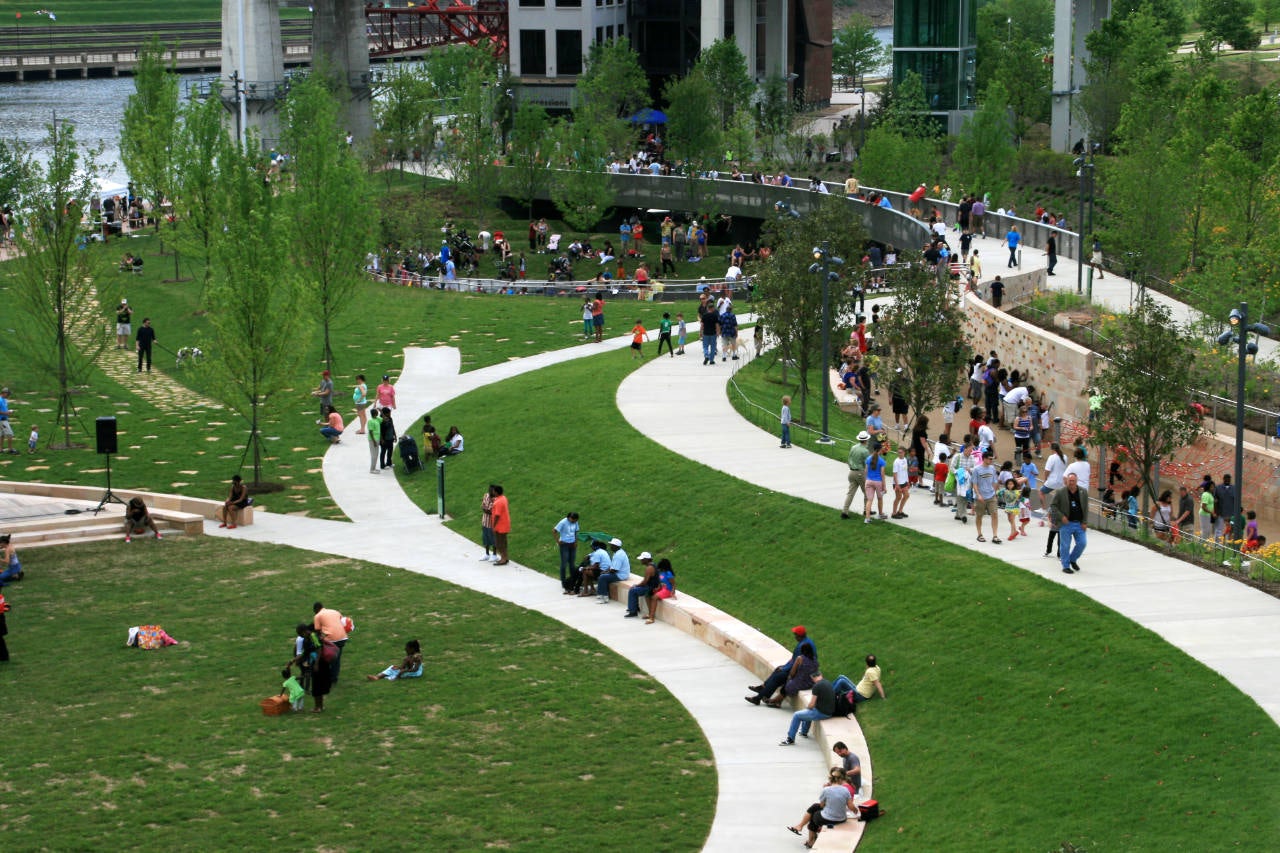Many of the world’s greatest cities can trace their historical growths back to one simple and often overlooked geographical aspect: proximity to water. Whether it is the open ocean or a wide meandering river, countless early cities came to be due to accessibility by ship and the subsequent economic influx that allowed them to flourish into regional or even global powerhouses of trade, commerce and industry.
In the wake of globalization and post-industrialization, many once-buzzing urban ports and waterfronts have fallen into disuse and disrepair. As cities around the world become increasingly environmentally conscious, and shift their planning to be more people-focused, designers are honing in on waterfronts more than ever, with facelifts in the form of parks, plazas or even commercial development.
Once harsh and uninviting, stretches of waterfront are now widely being seen as vital urban assets, providing city-dwellers with green space in the midst of bustling concrete jungles. New York’s Brooklyn Bridge Park, Hudson River Park and Governor’s Island are all recent East Coast examples of this effort. Jumping across the globe, both Madrid and Seoul boast impressive riverfront parks after tunneling miles of highway, unburying underground river conduits and reclaiming the land above for all to enjoy. The Chicago Riverwalk’s revitalization is now in full swing, and even Los Angeles is planning to turn its barren concrete-lined LA River into a lush, green landscaped oasis.
The momentum of these efforts in larger cities, which are arguably more capable of taking risks, is taking hold in many small and midsize cities. Here is a roundup of both in-progress and recently completed waterfront projects.


Pittsburgh’s waterways played host to Florentijn Hoffman’s infamous Rubber Duck Project in 2013. Images via Riverlife
Pittsburgh
A classic example of a former industrial riverfront city, Pittsburgh’s once-booming steel industry has dwindled but given way to much positive development over the past 20 or so years. Several thousand new residential units, miles of hiking, walking and biking paths, boat landings and sports venues all add up to the grand scheme of the city’s massive Three Rivers Park development.

Image via The Municipal Sports and Recreation Centre

Washington, D.C.
In the U.S. capital, much activity is happening in the Southwest Waterfront neighborhood. Originally tied into Pierre L’Enfant’s city plan street grid, the area has since transformed in the face of economic decline, demographic shifts, urban renewal plans, street relocations and highway construction. Today, the neighborhood sits cut off from the center city, underutilized and destined for greater potential.
Meet “The Wharf,” the area’s re-branded identity under a recently begun, $2 billion mixed-use redevelopment project, which aims to reconnect and enliven this stretch of prime waterfront real estate. The project, a public/private partnership between Hoffman-Madison Waterfront and the District of Columbia, will include apartments, condos, an InterContinental Hotel, office space, retail, restaurants and arts venues galore as well as a marina in Phase 2.
Also making recent headlines in Washington, D.C., is the team behind the 11th Street Bridge Park, who are in the works to build the city’s first elevated public park, spanning the Anacostia River on old bridge foundations.

Downtown Hartford, pre-highway reconstruction. Image via Riverfront Recapture

Image via Riverfront Recapture
Hartford
Situated at the northernmost navigable point of the Connecticut River, Hartford, Connecticut, is one of the oldest cities in the country and in its heyday was the wealthiest due to accessibility by ship and a flourishing insurance industry. Once home to the likes of Mark Twain, J.P. Morgan and Katharine Hepburn, Hartford has a star-studded history. However, the postwar interstate highway building spree was not kind to the city, with I-84 slicing through downtown and I-91 running between the river and downtown.
A 1984 redesign of I-91 presented a unique opportunity to reunite the city with its waterway, and the nonprofit group Riverfront Recapture successfully convinced the Connecticut Department of Transportation to incorporate its vision to restore pedestrian access to the riverfront from downtown. By 1999, I-91 was lowered to ground level, and a landscaped plaza was built over the highway to bridge the gap from downtown to the existing riverfront parks up- and downriver.
Riverfront Plaza features grassy landscaped terraces that form amphitheater-type seating leading down to the water. This project was extremely well-received by the local community and in 2000 was awarded top design honors from the American Society of Landscape Architects.

Via Hardaway
Nashville
Nashville’s Cumberland Park is another recent success story, opening in 2012 on the banks of the Cumberland River. As part of the city’s Riverfront Revitalization Plan, this park spans 6.5 acres and features exciting play spaces for families and children, water features, a climbing wall and a network of meandering walking trails. Below the surface, Hargreaves Associates incorporated brownfield cleanup, water-harvesting systems and geothermal energy use into the infrastructure of the park.








